Mary Wollstonecraft sculpture condemned as ‘naked silver Barbie’
Maggi Hambling’s statue is intended to represent the feminist icon’s imagination
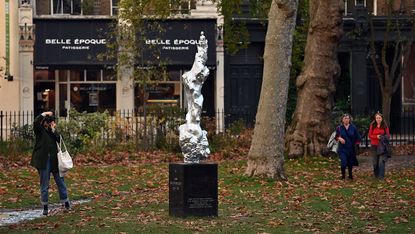
A statue created to celebrate the life and ideas of Mary Wollstonecraft instead depicts the philosopher as a “naked sliver Barbie”, according to critics.
Maggi Hambling’s sculpture of Wollstonecraft - best known for her 1792 work Vindication of the Rights of Woman - “portrays a silver female figure emerging from a swirling mingle of female forms”, says the BBC.
But that symbolic depiction has won few fans after being unveiled on Tuesday night in Newington Green, north London, where protesters were quick to voice their objections. One demonstrator “was seen covering the statue in a black T-shirt with the message ‘Woman - Adult human female’,” the Daily Mail reports. The slogan “has been linked to anti-transgender movements”, the paper adds.
Subscribe to The Week
Escape your echo chamber. Get the facts behind the news, plus analysis from multiple perspectives.

Sign up for The Week's Free Newsletters
From our morning news briefing to a weekly Good News Newsletter, get the best of The Week delivered directly to your inbox.
From our morning news briefing to a weekly Good News Newsletter, get the best of The Week delivered directly to your inbox.
The T-shirt was soon removed, but questions about the figure’s nakedness persisted.
“Nameless, nude and conventionally attractive is the only way women have ever been acceptable in public sculpture,” tweeted writer Imogen Hermes Gowar.
Fellow author Dr Laura Wood detected a double standard, tweeting: “How many of our important male writers are depicted naked in their statues? You never see Charles Dickens with his balls out, do you?”
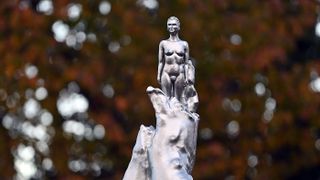
But sculptor Hambling “said the critics had confused Wollstonecraft with the figure in the work”, the London Evening Standard reports.
“The whole sculpture is called ‘for Mary Wollstonecraft’ and that’s crucially important,” Hambling told the paper. “It’s not an idea ‘of’ Mary Wollstonecraft naked.”
The figure “has to be naked because clothes define people”, she added. “Statues in historic costume look like they belong to history because of their clothes. It’s crucial that she is ‘now’.”
That argument appears to have convinced jistorian Dr Hannah Dawson, who tweeted that Hambling seemed to be “drawing on what Wollstonecraft herself said about statues: that they are ‘not modelled after nature’, but are rather projections of the imagination”.
“I went to see the statue with my own eyes,” Dawson added, “and found this completely beautiful sculpture in the setting sun, surrounded by such life and bursting conversation.”
Create an account with the same email registered to your subscription to unlock access.
Sign up for Today's Best Articles in your inbox
A free daily email with the biggest news stories of the day – and the best features from TheWeek.com
Holden Frith is The Week’s digital director. He also makes regular appearances on “The Week Unwrapped”, speaking about subjects as diverse as vaccine development and bionic bomb-sniffing locusts. He joined The Week in 2013, spending five years editing the magazine’s website. Before that, he was deputy digital editor at The Sunday Times. He has also been TheTimes.co.uk’s technology editor and the launch editor of Wired magazine’s UK website. Holden has worked in journalism for nearly two decades, having started his professional career while completing an English literature degree at Cambridge University. He followed that with a master’s degree in journalism from Northwestern University in Chicago. A keen photographer, he also writes travel features whenever he gets the chance.
-
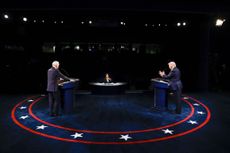 'Good riddance to the televised presidential debate'
'Good riddance to the televised presidential debate'Instant Opinion Opinion, comment and editorials of the day
By Harold Maass, The Week US Published
-
 Caitlin Clark the No. 1 pick in bullish WNBA Draft
Caitlin Clark the No. 1 pick in bullish WNBA DraftSpeed Read As expected, she went to the Indiana Fever
By Peter Weber, The Week US Published
-
 Today's political cartoons - April 16, 2024
Today's political cartoons - April 16, 2024Cartoons Tuesday's cartoons - sleepyhead, little people, and more
By The Week US Published
-
 Miss Universe 2023: win for inclusion or nothing to celebrate?
Miss Universe 2023: win for inclusion or nothing to celebrate?Talking Point Beauty pageant included mothers, plus-sized models and trans women – but fails to distract from global conflict
By Harriet Marsden, The Week UK Published
-
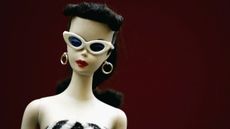 Barbie: from problematic toy to feminist icon?
Barbie: from problematic toy to feminist icon?Talking Point She may have exacerbated negative body image issues among girls but Barbie also offered a diverse range of career choices
By Sorcha Bradley Published
-
 Why today’s puritanism is latest example of moral panic around naked women
Why today’s puritanism is latest example of moral panic around naked womenfeature Scantily clad celebrities are once again being presented as a threat to wider society
By The Week Staff Published
-
 Sport on TV guide: Christmas 2022 and New Year listings
Sport on TV guide: Christmas 2022 and New Year listingsSpeed Read Enjoy a feast of sporting action with football, darts, rugby union, racing, NFL and NBA
By Mike Starling Published
-
 House of the Dragon: what to expect from the Game of Thrones prequel
House of the Dragon: what to expect from the Game of Thrones prequelSpeed Read Ten-part series, set 200 years before GoT, will show the incestuous decline of Targaryen
By Chas Newkey-Burden Published
-
 One in 20 young Americans identify as trans or non-binary
One in 20 young Americans identify as trans or non-binarySpeed Read New research suggests that 44% of US adults know someone who is transgender
By The Week Staff Published
-
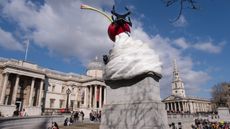 The Turner Prize 2022: a ‘vintage’ shortlist?
The Turner Prize 2022: a ‘vintage’ shortlist?Speed Read All four artists look towards ‘growth, revival and reinvention’ in their work
By The Week Staff Last updated
-
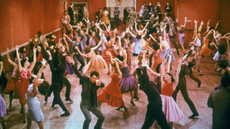 What’s on TV this Christmas? The best holiday television
What’s on TV this Christmas? The best holiday televisionSpeed Read From films and documentaries to musicals for all the family
By The Week Staff Published